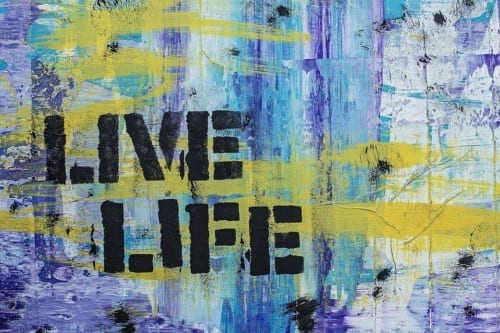A passionate advocate for kids and the Arts
 Alina Campana is the Program Director for Turnaround Arts: Minnesota at the Perpich Center for Arts Education, whose mission is to work with low-performing schools using the arts to affect a positive transformation.
Alina Campana is the Program Director for Turnaround Arts: Minnesota at the Perpich Center for Arts Education, whose mission is to work with low-performing schools using the arts to affect a positive transformation.
Her focus is on shifting the teacher’s perspective of their students by engaging with them through the arts and thereby gaining a deeper understanding of the individual child through their imagination and creativity. Alina is an advocate for teaching the arts as an essential part of a standard curriculum and not as just an after-school activity.
Alina has broad global experience, including touring Europe as a member of her high school youth orchestra and teaching for a time in Mongolia. She graduated with a Bachelor’s degree from Wellesley College and earned her Master’s degree in Art and Visual Culture Education from the University of Arizona. She has worked in education, youth development, communications, and professional development in a variety of arts organizations in the US and abroad.
She cites not just her personal experience with Turnaround Arts but decades of research showing the positive impact the arts have on a student’s social-emotional health. As she states in the interview, multiple studies have shown that the arts in the classroom are associated with greater academic achievement, an improvement in test scores, and reduced disciplinary issues in schools.
Interview:
Dr. Berger: Alina, it’s nice to spend some time with you today. We were talking off-air about the arts, and I was sharing with you my own personal passion for the arts and a strong belief in the impact that it has on young developing minds and communities in so many ways.
Obviously, heading up Turnaround Arts there in Minnesota, this is a passion for you. Tell me why Turnaround Arts is so impactful for you and something that you’re working on a day-to-day basis.
Alina Campana: A lot of my career, I’ve been working in education and in the arts in communities ─ looking at how the arts can be used to help bring about positive change; and Turnaround Arts encapsulates that. Altogether, we work for schools to support some of the lowest-performing schools in Minnesota to use the arts as one of the key tools in helping them transform as they’re working on school improvements.
 They’re building up the arts throughout the school and in every classroom with the idea that that will help them impact student achievement and student engagement and also things like family involvement which is key to a successful school and school climate and culture.
They’re building up the arts throughout the school and in every classroom with the idea that that will help them impact student achievement and student engagement and also things like family involvement which is key to a successful school and school climate and culture.
DB: Tell me how they’re making that connection. I think one of the challenges that the arts, in general, especially in K-12 has had is making that argument ─ and we shouldn’t have to ─ that it’s not the icing on the cake; it’s not an add-on; it’s not some course or list of courses that if you’d like to have, you would add to your school or your community. It is an integral part of school improvement and achievement in that way.
How has Turnaround Arts, from your perspective and your experience, done a better job than most in making a compelling argument for inclusion in that way that lessens the adoption? When adopting something like Turnaround Arts you can say, “Well, you know what, they’re making a propelling case, and they’re providing us with great resources and opportunities, and we see differences with kids”? How have they done that differently than most?
AC: I know there’s that sort of narrative and common belief out there that the arts are extra, but there’s a lot of research from decades that shows that the arts are associated with more academic achievement for kids and going on to higher education, career and engagement in schools.
It’s built on the foundation of a lot of research. Our schools are also seeing impact ─ I don’t know if you’re familiar with the evaluation report that came out of the first eight Turnaround Arts schools nationally. But one of the most compelling results they saw was that the Turnaround Arts schools’ test scores improved more than other schools that were in the improvement status.
 So there is growing compelling research that shows that the arts can be a positive influence.
So there is growing compelling research that shows that the arts can be a positive influence.
In our schools in Minnesota, we’ve seen that as well with not only test scoring quizzes but reduced behavior referrals and reduced suspensions not necessarily across the board but in the majority of our schools.
DB: Have you seen different conversations in the faculty lounges of schools that you’re interacting with because Turnaround Arts is a part of the fabric of the very community? Do you see a difference?
If you think about a school that doesn’t have an arts program and there are stories all around the country where entire districts have had to shut down arts programs for a period. The void has to play a role in just the look and feel of a school and a classroom; I would think that there is something different going on when you have a dedicated workforce and staff that knows that it’s part of what’s going on at school.
You’re talking about discipline, too. If we’re seeing behavioral changes and reductions in that and kids, who are more engaged. You think about teacher-learner interaction, that relationship, and how that feels. The staff in their own value proposition, and how they feel about their profession.
AC: Absolutely! I think, in some ways, when we first started working with schools, you could roughly divide the staff into a couple of groups. One, teachers who are happy to have something like Turnaround Arts in their school because they feel like that’s supplanting standardized testing.
In some schools, as you’ve said, the arts aren’t a part of learning, or if they are, it’s minimal. Having something like Turnaround Arts bring the arts back in as part of the way that you teach and part of the way that kids learn. That’s a huge relief for many teachers, and they just grab onto it immediately and run with it because it’s part of how they want to be working as well.
 And then, some teachers are uncomfortable with the arts, and it could be kind of scary because it wasn’t core to how they grew up in their learning or they haven’t had experience with the arts that much. But, very often, when they try it, they do see a shift in their classroom in the ways kids learn. And, sometimes, we hear from teachers who say that the arts have helped them see that child in a new way and the child was a student whom they thought of as struggling. Learning through the arts allowed that child to shine, in a way, that they hadn’t seen before. So it helps shift teacher perspectives on who their kids are and how they learn. I think that’s important for all the kids.
And then, some teachers are uncomfortable with the arts, and it could be kind of scary because it wasn’t core to how they grew up in their learning or they haven’t had experience with the arts that much. But, very often, when they try it, they do see a shift in their classroom in the ways kids learn. And, sometimes, we hear from teachers who say that the arts have helped them see that child in a new way and the child was a student whom they thought of as struggling. Learning through the arts allowed that child to shine, in a way, that they hadn’t seen before. So it helps shift teacher perspectives on who their kids are and how they learn. I think that’s important for all the kids.
DB: What you just said is the thing that I hope the audience walks away with because that says to me that even when the teacher and that student are not engaged in the arts, per se, during a given subject or period in school, it changes the fundamental relationship. For a child to feel as if they’re being looked upon with optimism from their teacher and good feelings in that way as opposed to what they might misinterpret as “They don’t like me” or “I’m not doing well in school.” To me, that power far outweighs just the tactical element of teaching someone to read music or to play music or any skill that we’re talking about.
That right there ─ are we on the same page with that? Does that resonate with you? I think that’s very powerful.
AC: Absolutely! We know that kids need to feel engaged and safe in a good space at school. And we also know that different kids learn in different ways. So part of the philosophy of Turnaround Arts is “Let’s help find ways that different kids can learn that content.”
DB: Let’s close with this. When was it when you were young, that you realized the arts was a passion for you? What was that light bulb moment? Was it something that you participated in? Was it an experience, a song, something that just said, “This will never leave me; this is a best friend now, and I recognize in my life”?
 AC: It probably happened before the experience I’m going to share with you. But one of the most impactful experiences I had was when I was in high school. I played the violin and I was in a youth orchestra that toured Europe. We would spend three days in every community and stay with families and give concerts. It was a very intense experience.
AC: It probably happened before the experience I’m going to share with you. But one of the most impactful experiences I had was when I was in high school. I played the violin and I was in a youth orchestra that toured Europe. We would spend three days in every community and stay with families and give concerts. It was a very intense experience.
I think what was so impactful about that was the high level of performance. There was a lot of preparation that relied on a strong collaboration for the orchestra, listening to each other, and a camaraderie that comes from investing so much time and energy into perfecting something together. And then, being able to share that around the world and having audiences appreciate all the work and dedication that went into it. That was wonderful.
DB: And I have to ask because you mentioned it. It sounds like there was another moment that you were debating sharing.
AC: I’ve always loved to draw. That was something that my mom and I shared when I was really young. She loves to draw, too. I would say that my first love is drawing.
DB: I think it’s great to celebrate and to do that. I’ve got two young ones now, and their favorite thing to do is to bring Daddy pictures that they’ve made and “Where can you put them in the office?”
TAnd they want to look at them and there is pride that comes along with that. It’s very powerful. It starts with drawing for Daddy and maybe ends with a Turnaround Arts position.
AC: Absolutely!
DB: Keep up the great work up there in Minnesota. It’s such a nice opportunity to spend time with a passionate educator who’s really making a difference. Thanks so much.
AC: Thank you.
About Alina Campana
 Alina Campana is the Program Director for Turnaround Arts: Minnesota, working with low-performing schools to use the arts as a key tool in school transformation. Previously, she managed the Perpich Arts Integration Network of Teachers, a rural K-12 teacher professional development project.
Alina Campana is the Program Director for Turnaround Arts: Minnesota, working with low-performing schools to use the arts as a key tool in school transformation. Previously, she managed the Perpich Arts Integration Network of Teachers, a rural K-12 teacher professional development project.
She has also worked in education, youth development, communications, and development in a variety of arts organizations in the US and abroad. She has taught in Mongolia, and at the college level in the U.S. Alina holds a Master’s degree in Art and Visual Culture Education from the University of Arizona, and a Bachelor’s degree from Wellesley College.
This article was originally published in the Huffington Post .
AuthorDr. Berger is one of many industry education correspondents for the Mind Rocket Media Group, An educator and former school administrator. His video interview work and conversational podcasts have been featured in various media outlets. He often hosts education panel discussions and develops strategic content. As an academic Dr. Berger is a guest lecturer at Vanderbilt University’s Owen Graduate School of Management. A former assistant principal, he has been an adjunct undergraduate professor and developer of online college courses. He is a passionate Detroit sports fan who has also adopted Nashville sports teams as his own.
Contact the Mind Rocket Media Group if you are interested in an industry interview and a placement on EdCircuit.
- Providence Journal – Singer Valerie June pays visit to Providence middle school
- Education Week – Turnaround Arts Program Is Expanding
- Voice of America – Arts Program in Poor Performing Schools Helping Students
